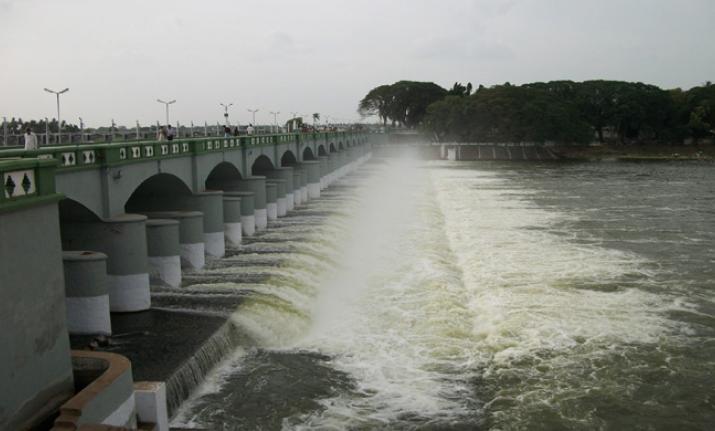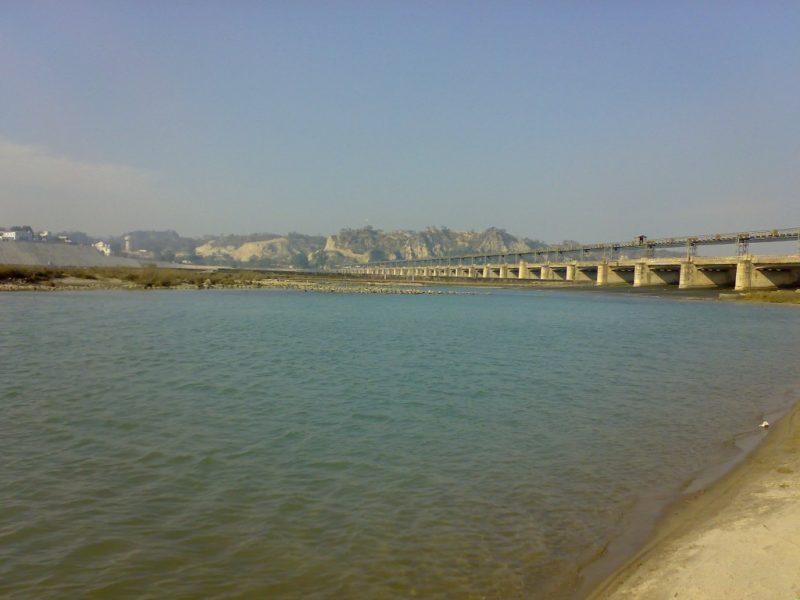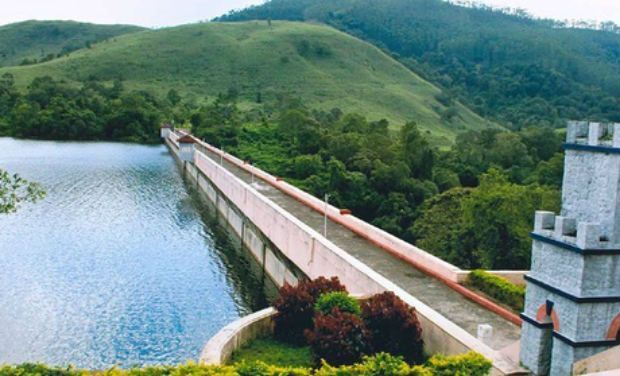
On World Water Day, a look at India's key inter-state river disputes
The Federal takes a look at the origins and Constitutional remedies of the rows; at the heart of the debate is the preservation, equitable distribution and sustainable utilisation of river water

India is a land of rivers with 25 major river basins that find their source in the densely forested Himalayan ranges, Western, Eastern Ghats and other mountain ranges. These rivers and their tributaries are the lifeline of our cities and towns and the pulse of our agricultural fields.
The country got divided into states after Independence but such boundaries are immaterial for rivers like Ganga, Brahmaputra, Yamuna, Godavari, Cauvery, Krishna, Narmada etc that have flown eternally and with full vigour through different regions to give rise to distinct cultures and identities. However, the importance of river water gave rise to several inter-state disputes and most of them have persisted for years with no solution in sight.
On World Water Day (March 22), The Federal takes a look at some prominent inter-state river disputes, their origins and Constitutional remedies that can resolve these age-old conflicts in the larger interest of the people of India. At the heart of the debate is the preservation, equitable distribution and sustainable utilisation of river water.

Cauvery water dispute – Karnataka and Tamil Nadu
The two states have fought legal battles in courts and political battles on the streets for several years over their claims on the Cauvery river water. Karnataka has time and again contested the British era division of water citing it to be arbitrary and unjust for the people of the state. The Centre finally constituted a tribunal in 1990 to look into the matter. After hearing both the states for the next 16 years, the tribunal gave its final verdict in 2007.
Accordingly, the tribunal allocated 419 TMC of water annually to Tamil Nadu and 282 TMC to Karnataka; 30 TMC of Cauvery river water to Kerala and 7 TMC to Puducherry. The dispute, however, is far from over with all four states filing review petitions against the orders.
The Karnataka government’s recent decision to build a dam on Cauvery in Mekedatu has renewed tensions between Karnataka and Tamil Nadu.

Satluj Yamuna Link Canal – Punjab and Haryana
The 214 km proposed canal will connect the Sutlej and Yamuna rivers for a more equitable distribution of water between the two states that got reorganised and separated in 1966. Haryana then sought 4.8 MAF (million acre feet) water out of Punjab’s total share of 7.2 MAF from the two rivers, while Punjab claimed the entire quantity belonged to it.
Also read: The ‘Indian’ resides only inside the pages of the passport
The dispute has raged and stretched over the years. The link canal was proposed in 1982 to resolve the dispute with the Supreme Court too, over the years, clearly telling Punjab to complete its side of the canal. The canal work is 85% complete with Haryana finishing 92 km of the construction in its land. Haryana would benefit enormously by gaining water from Ravi-Beas from Punjab. However, successive Punjab governments have refused to finish the work on its land because of political interferences and militancy threat.
Andhra, Telangana spar over Krishna river water
The matter relates to the distribution of Krishna water between Andhra Pradesh, Telangana, Maharashtra and Karnataka.
The water of the Srisailam reservoir — which is the main storage for river water — has turned out to be a major warring point between Andhra Pradesh and Telangana. Andhra accused Telangana of depriving its people of its legitimate share of water for drinking and irrigation purposes.
Narmada – One river 5 claimants
The dispute pertains to utilisation of Narmada river water between the states of Gujarat, Madhya Pradesh, Maharashtra and Rajasthan. Besides distribution challenges, the project was mainly opposed citing environmental concerns as several acres of fertile and forest land got submerged under the back waters.
The Narmada Water Disputes Tribunal in 1969 ruled the distribution of the river water in the following manner:
Gujarat: 9.00 MAF (million acre feet)
Madhya Pradesh: 18.25 MAF
Maharashtra: 0.25 MAF
Rajasthan: 0.50 MAF
The tribunal determined that the height of the Sardar Sarovar dam should be fixed for Full Reservoir Level and also directed the Gujarat government to take up and complete the construction of the dam accordingly.
As things stand today, Madhya Pradesh, Maharashtra and Rajasthan are yet to pay over Rs 7,000 crore to Gujarat, where the dam on Narmada river is located. For speedy resolution of the issue, a committee and a sub-group committee, comprising representatives of all the four participating states, have been formed after a representation was made by Gujarat in this regard.
The Sardar Sarovar Narmada Nigam Ltd has been writing to different concerned authorities of the three other states every month, asking them to clear the dues, he added.

Mullaperiyar dam – Tamil Nadu and Kerala
The dam located on Periyar river has been the bone of contention between the two southern states. For Kerala, where it is located, the structure poses a threat to lakhs of people living downstream. Tamil Nadu, on the other hand controls the dam and largely relies on it for meeting the water requirements of people in five districts.
Following heavy rains in October last year, the Supreme Court directed that the maximum water level in Mullaperiyar dam should be 139.50 ft until November 10, 2021. Tamil Nadu was keen on increasing the height of the dam to 142 ft, as was decided by the Supreme Court in 2014, but Kerala wanted it restricted to 139 ft. Kerala was extra cautious this time because it had learned its lessons from the 2018 floods that caused massive devastation in Kerala, mainly because of sudden discharge from the Mullaperiyar dam, after its water level went beyond 142 ft and all spillway shutters of the dam suddenly lifted.
The mechanism for resolving inter-state river water disputes
The Inter-State River Water Disputes Act of 1956 is meant to resolve such problems.
Therefore, if a state government requests the Centre to intervene in a river-related dispute with other state and the Centre thinks the water dispute cannot be settled by negotiations, then a Water Disputes Tribunal is constituted.
Krishna Water Disputes Tribunal, Mahanadi Water Disputes Tribunal, Mahadayi Water Disputes Tribunal (2010), Ravi & Beas Water Tribunal are some of them.
The Inter-State River Water Disputes Act of 1956 was amended in 2002, making it mandatory to resolve interstate river dispute by constituting water disputes tribunal in a year and also a three-year time frame to give a decision.
Politics at play
It has been observed that inter-state river disputes have stretched over the years mainly because of growing nexus between water and politics with political parties using the emotive issue for vote bank politics.
As a result, several states have dared to defy even Supreme Court orders, extended litigations and subversed resolution mechanisms. For example, the Punjab government, over the years, has refused to budge on sharing Sutlej water with Haryana despite several warnings by the apex court.


